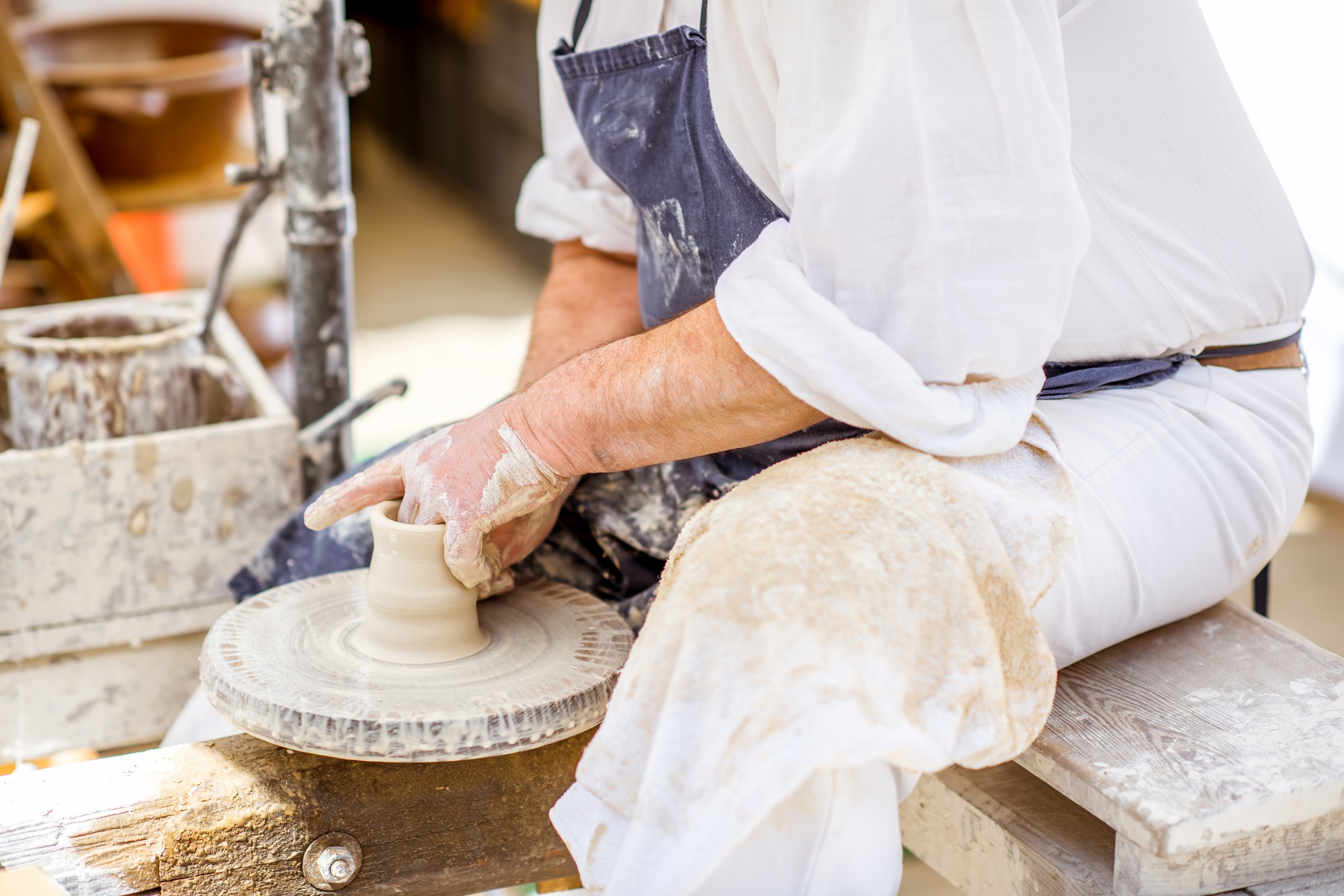Key Takeaways

- Identify Profitable Crafts: Focus on high-demand categories like handmade jewelry, home decor, personalized gifts, clothing, and kids’ crafts for better earnings.
- Craft Business Models: Explore various selling avenues, including online shops (like Etsy), local markets, subscription boxes, and workshops, to diversify income streams.
- Understand Market Demand: Research consumer trends and preferences to offer products that resonate with your target audience, maximizing your sales potential.
- Optimize Material Costs: Choose high-quality materials wisely and consider bulk purchasing to keep costs low and profit margins high.
- Enhance Selling Strategies: Utilize online marketplaces and local craft fairs effectively, ensuring strong visuals and engaging descriptions to attract customers.
- Invest in Skills Development: Improve your craft skills through workshops or practice to offer high-quality products that justify higher price points.
If you’ve ever wondered how to turn your creative passions into profit, you’re not alone. Crafting isn’t just a fun hobby; it can also be a lucrative venture. With the right skills and knowledge, you can transform your handmade creations into a steady income stream.
From personalized gifts to home decor, the possibilities are endless. But not all crafts are created equal when it comes to making money. Understanding which types of crafts sell well can help you focus your efforts and maximize your earnings. Dive into the world of profitable crafts and discover what could be your next successful project.
Overview of Profitable Crafts

Crafting can become a lucrative small business when you focus on the right products. Identifying profitable handmade items plays a vital role in your success as a craftsman. Here’s a look at some of the top categories and ideas that generate income.
Unique Handmade Products
- Jewelry: Handcrafted jewelry, including earrings, bracelets, and necklaces, often captures a wide audience. Utilize unique materials or customize designs to stand out.
- Home Decor: Handmade home decor, like wall art, candles, or decorative pillows, appeals to customers looking to personalize their spaces. Pay attention to current trends to create in-demand items.
- Personalized Gifts: Customized gifts, such as engraved items or monogrammed accessories, have a strong market. Highlight the personalization aspect, allowing customers to create unique gifts.
- Clothing and Accessories: Handmade clothing, bags, and accessories remain popular. Focus on quality and unique designs that cater to niche markets, such as sustainable fashion.
- Kids’ Crafts: Items for children, including toys, clothing, or educational products, can attract parents seeking high-quality alternatives. Ensure safety and regulatory compliance in your creations.
Crafty Business Models
- Online Shop: Setting up an online store on platforms like Etsy offers access to a vast customer base. Incorporate an Etsy fees calculator to ensure profitability calculations remain accurate.
- Local Markets: Participating in local craft fairs allows you to showcase your handmade products directly to customers. This approach builds community connections and boosts sales potential.
- Subscription Boxes: Creating a subscription service for your handmade items can generate consistent revenue. Curate themed boxes to engage customers and encourage repeat business.
- Workshops and Classes: Teach others your craft skills through workshops. This model not only diversifies income but also establishes you as an expert in your field.
When considering a craft business, ensure you research handmade business legal requirements and pricing strategies for your products. Utilizing a handmade pricing calculator can provide insights into setting prices reflective of the work and costs involved.
Explore various handmade business ideas to discover which ones resonate with you, refining your focus to what you enjoy and what sells successfully. Starting a craft business can provide not just profit, but also personal fulfillment through creative expression.
Popular Craft Categories

Many profitable craft categories exist, allowing you to explore creative avenues for your small business. Focusing on specific areas can maximize your earnings and appeal to a wider audience.
Handmade Jewelry
Handmade jewelry remains a lucrative opportunity thanks to its universal appeal. Most people wear some form of jewelry, making this product consistently in demand. Unique pieces crafted from materials like resin and polymer clay offer customizable options for customers. Tapping into trends allows you to create one-of-a-kind items that cater to various tastes. Starting a handmade jewelry business can be easier with platforms like Etsy, where fees and setup costs are relatively low compared to traditional retail.
Home Decor Items
Home decor items attract customers looking to personalize their living spaces. Popular products in this category include wall art, decorative signs, lamps, and functional items like coasters and clocks. The profit margin for home decor businesses typically ranges from 20% to 45%, showcasing a highly profitable market. Consider offering limited-edition products or seasonal designs to enhance customer engagement. With effective marketing through social media, you can establish a strong brand presence and drive sales for your homemade decor products.
https://www.youtube.com/watch?v=VXZZ6V5usEI
Personalized Gifts
Personalized gifts stand out in the craft market, appealing to those seeking thoughtful, custom items. Offering bespoke products like engraved keepsakes or monogrammed gifts can significantly increase customer interest. This market segment encourages repeat sales and customer loyalty, as personalized items often hold sentimental value. Using online platforms to showcase your handmade products broadens your reach, making it simple to attract customers looking for unique gift ideas.
Factors Influencing Craft Profitability

Several factors affect the profitability of craft ventures. Understanding these elements helps you make informed decisions when starting your handmade business.
Material Costs
Material costs directly impact your profit margins. High-quality materials can enhance the appeal of your handmade products but also increase your expenses. Research various suppliers to find reliable sources that offer competitive pricing. For instance, purchasing in bulk can reduce costs for materials like leather or wood, benefiting your small craft business in the long run.
Market Demand
Market demand dictates how easily your crafts sell. Identify trends and consumer preferences by studying what products are popular on platforms like Etsy or at local craft fairs. This knowledge enables you to align your offerings with current interest, optimizing your chances for success. Engaging with potential customers through surveys can provide insights into what handcrafted items they want, allowing your business to cater effectively.
Skill Level
Your skill level influences both the quality of your handmade products and the range of items you can offer. Higher skill levels can allow you to create intricate pieces, like personalized glassware or detailed woodworking projects, which often command higher prices. Investing time in developing your craft or taking workshops can enhance your skills, making your small business more competitive.
Strategies for Selling Crafts

Selling your crafts effectively requires strategic planning and execution. Focus on your target market and choose platforms that best showcase your handmade products.
Online Marketplaces
Online marketplaces, such as Etsy, provide an excellent platform for selling handmade items. Setting up an Etsy shop allows you to reach a global audience. Prioritize high-quality photos and detailed descriptions to enhance your listings. Utilize tools like an Etsy fees calculator to understand potential costs and set competitive prices based on your handmade pricing calculator. Engage with your audience by responding to inquiries and updating them on new products. Promote your shop via social media to increase visibility and attract potential buyers.
Local Craft Fairs
Participating in local craft fairs offers a unique opportunity to showcase your products in person. Choose events that attract your target audience to maximize sales. Create an attractive booth display to draw attention. Use business cards to provide essential information about your brand. Engage with customers to build relationships and encourage repeat business. Offer samples or demonstrations to showcase your craftsmanship. Collect email addresses to inform potential customers about future events or online shop openings. By integrating local events into your sales strategy, you enhance your visibility and build a loyal customer base for your small craft business.
Conclusion

Exploring lucrative crafting opportunities can lead to both financial success and personal satisfaction. By focusing on popular categories like handmade jewelry and personalized gifts you can tap into markets with strong demand.
Utilizing effective sales strategies such as online platforms and local craft fairs will help you reach a wider audience. Remember to consider material costs and skill development as key factors in maximizing your profits.
With the right approach and creativity you can turn your passion for crafts into a thriving business. Embrace the journey and enjoy the rewards that come from sharing your unique creations with the world.
Frequently Asked Questions

What types of crafts are most profitable?
Crafts that typically offer high profitability include handcrafted jewelry, home decor items, personalized gifts, clothing and accessories, and kids’ crafts. Focusing on these categories can help maximize earnings while expressing your creativity.
How can I sell my crafts effectively?
You can sell crafts through various channels such as online shops like Etsy, local craft markets, subscription boxes, and workshops. Combining online sales with local events enhances visibility and fosters customer relationships.
What factors influence the profitability of craft businesses?
Key factors include material costs, market demand, and your skill level. Keeping material costs low while ensuring high-quality products can improve profit margins. Understanding consumer trends helps align your offerings with market demand.
Should I develop my crafting skills for better sales?
Yes, investing in skill development can enhance product quality and increase pricing potential. Higher-level skills may lead to unique designs and a better customer experience, making your business more competitive.
What strategies can help promote my craft business?
To effectively promote your craft business, use social media for marketing, create high-quality product photos, and engage with customers through local events. Building a strong online presence and offering exceptional customer service helps attract and retain customers.
Image Via Envato: imagesourcecurated, coffeekai, arthurhidden, sofiiashunkina, RossHelen, borodai, AboutImages



